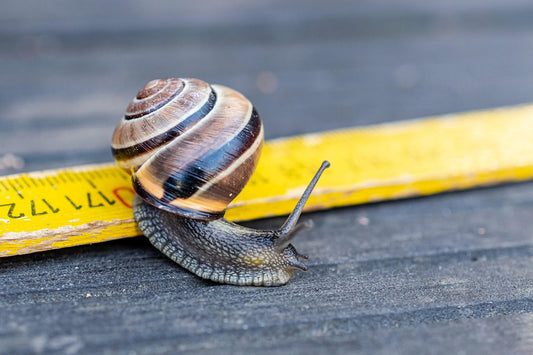- If the soundstage is in front of the speakers, you need to pull the speakers out into the room and give the soundstage a place to exist in the room. If you are space constrained you can also achieve this by adding diffusors, Tube Traps etc. behind the speakers and at the point of first reflection.
- If the soundstage is coming from the speakers themselves, refer to the first point or try a little less toe in - point them forward more making sure you still have a coherent center image. Sometimes less toe in can reduce the center image palpability but if you bring the two speakers closer together slightly you get better midbass coupling and a firmer center image.
- If the soundstage is indeed behind the loudspeaker but you're getting instruments that jump out or perhaps not enough depth, other than pulling them away from the rear wall you can also try tilting them back just a little (use a CD case under the front of the speaker) so they aren't beaming so much.
Getting our house in order
by Paul McGowan
One correction I'd like to make about my statement you should make sure your main speakers are flat to 40Hz - I should have said are -3dB at 40Hz and I would extend that as high as 60Hz (the -3dB point). There are very few speakers that don't go down this low, so you should be ok. It's just that subwoofers shouldn't go too high and you should never use a subwoofer to "help" the main speakers do their job. I know there's a big push to roll off the bottom of the main speaker in home theater applications and let the sub take over - but trust me, if that's what you need, a new speaker is a better choice.
So I am going to assume that you've made the decision to go forward with getting and installing a subwoofer in your system. You either have one already and just want a few tips on setup or you're starting fresh; perhaps resurrecting one out the closet. Whatever the case may be, let's roll our sleeves up and get started.
The first thing I want to suggest is the use of stereo subwoofers; one on the left and one on the right. You can use a mono sub but I would urge you to consider going stereo.
Secondly, I am going to assume your loudspeakers are placed into the room and away from the rear wall, perhaps as much as a third the way in (if you're lucky enough to have that kind of space). I am also going to assume your main loudspeakers have been tweaked and setup for best imaging and performance at your listening chair. It's going to be important that you get the main speakers right before you start adding a subwoofer because you'll do nothing more than further the confusion of sound in your room if this isn't the case.
So let's get a quick refresher on how to setup our main loudspeakers and make darn sure these are doing what we want first - the last thing you need is to add too many variables into the equation of subwoofer setup - it'll cause nothing but a bad experience if this critical step isn't right.
The soundstage your system creates, on a simple well recorded piece, should be behind the main speakers - not in the speakers and certainly not in front of the loudspeaker. The sound should be completely detached from the actual speakers themselves and appear to float in the space behind the speakers.
I would recommend we all start with the same recording or from a known engineer that gets how to do this. Any Reference Recording will get this right, most of the Blue Coast recordings do as well and pretty much anything from Harmonia Mundi will too. There's certainly plenty of great acoustic recordings, but I recommend you get something you can rely upon for this test. I am going to recommend those of you that are serious with this mission get the same starting point I will be using to help us through this.
Go to Amazon through this link and purchase Tutti. This is a classic Reference recording that's easily obtained and available for $8 on Amazon or the SACD version is available on Music Direct for $22. HD Tracks also has it and if you prefer, just download track 14 for $1.50 here.However you obtain it, play track 14 at a live level, remembering that Keith Johnson records everything 6dB down from "normal" CD's so don't be surprised if you have to turn the level up. On the PWD directly into the power amp, I use 80 on the volume.
Track 14 should appear completely from behind the loudspeakers and no individual instrument should come directly from the speaker itself. The depth of the soundstage will vary from system to system and room to room but in my setup the main orchestra appears about 20 feet behind the main loudspeakers for the farthest instrument from the microphones and the closest perhaps a couple of feet behind the speakers. No individual instrument should ever jump out or be predominant - this is a very even well balanced recording. If your system gives you that same space you're ready to add a subwoofer. If not, here are a few tips:
- Choosing a selection results in a full page refresh.
- Opens in a new window.








